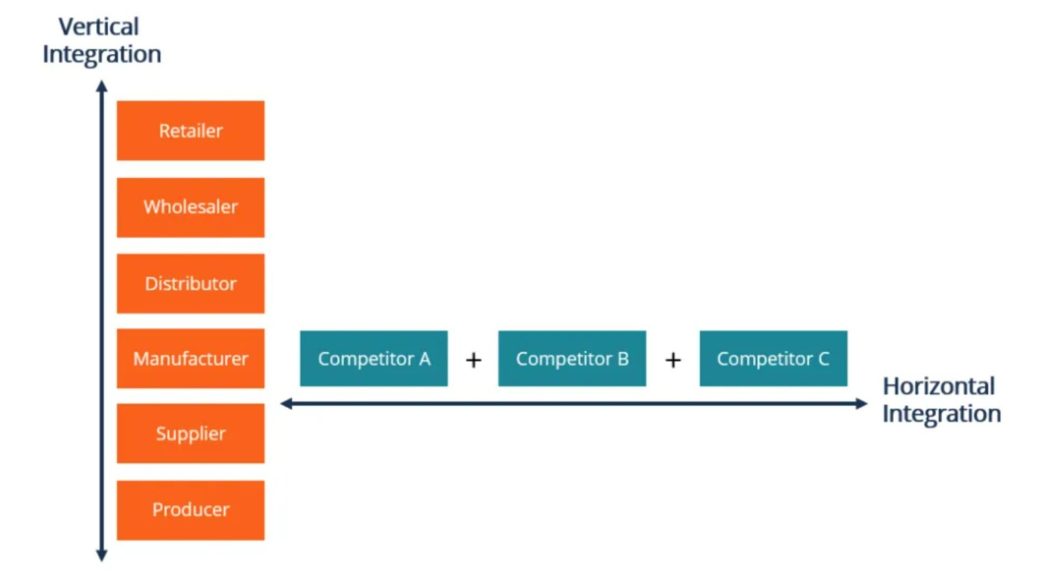Whenever a business starts off into the market, it targets developing its client base, and furthermore, its ability to convey the best of its items and administrations to the clients. In any case, actually quite difficult, this has never been a run yet a long-distance race.
Such extensions in the business world require plenty of assets as far as funds, human resources, and, in particular, a business development methodology. There are numerous procedures that organizations utilize to layout their place among their friends on the lookout, however at an undeniable level, they can be assembled into two, in particular vertical monopoly vs horizontal monopoly.
Key differences between horizontal and vertical integration
Coming up next are the significant contrasts among even and vertical mix:
- Horizontal monopoly happens between two firms whose item and creation level are the same. Vertical integration is a joining of two firms that works in various phases of the assembling system.
- Horizontal monopoly targets expanding the size of business and size of creation, though vertical integration centers around reinforcing and smoothening its creation circulation process.
- The best benefit of horizontal monopoly is that it takes out contest between firms, which at last expands the portion of the overall industry of the organization. On the other hand, vertical integration brings about bringing down the expense of creation and wastage.
- Horizontal monopoly just brings collaboration, however not independence while vertical integration assists the organization with acquiring cooperative energy with independence.
- Horizontal monopoly assists with obtaining command over the market, however, vertical integration is a technique utilized for overseeing the entire business.
Forward integration as a part of vertical monopoly
As we have seen, vertical integration incorporates an organization with the units providing natural substances to it (in reverse joining), or with the appropriation channels that convey its items to the end-buyers (forward coordination). For instance, a store might secure control of ranches to guarantee supply of new vegetables (in reverse combination) or may purchase vehicles to smoothen the circulation of its items (forward integration).
A vehicle maker might procure tire and electrical-part industrial facilities (in reverse joining) or open its own display areas to sell its vehicle models or give after-deals administration (forward combination). There is a third sort of vertical combination, called adjusted incorporation, which is a reasonable blend of reverse and forward integration procedures.
Utilization of horizontal and vertical integration
Vertical integration technique is mostly utilized by the organizations to:
- limit rivalry by assuming control over contenders
- increment their pieces of the pie
- turn out to be more expanded in the functional presence
- dispose of the expense of fostering another item and making it accessible to the market
Horizontal monopoly can end up being a fruitful system when:
- contenders are not in the ability to go for head-on rivalry for long because of the impediment of assets available to them
- an organization is contending in a developing industry
- economies of scale or restraining infrastructure circumstance are valuable for every one of the partners of the business
However, the horizontal integration, as clarified above, may seem, by all accounts, to be a promising system, it may not work in all circumstances. It relies upon the organization’s incentive as well as its assets and capacities. The model gives an extraordinary formula to progress and use yet is restricted to variables. The cooperative energy made through the horizontal integration to advance the items at the new increased creation levels and furthermore relies upon the spot that the organization holds in the whole worth chain.

